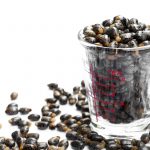A Seasonal Stimulus for Influenza
Jacob Schor, ND
The recent paper by John Jacob Cannell (“Epidemic Influenza and Vitamin D,” 2006) linking epidemic influenza outbreaks with vitamin D deficiency could be the landmark paper of 2006. It certainly is going to change the way I answer questions about flu shots or approach lower respiratory infections. If Cannell’s hypothesis is correct, taking a giant dose of vitamin D makes as much or more sense than bothering with flu shots.
Ultraviolet Light
Cannell’s paper awakens the old debate of germ theory vs. fertile field. He begins by going back a quarter century to the work of British epidemiologist Edgar Hope-Simpson. Hope-Simpson spent his later years studying influenza. He was convinced that a link existed between the seasonal outbreaks of influenza and seasonal variations in ultraviolet light levels. He just didn’t know what the link was.
Influenza all but disappears during the summer months when ultraviolet exposure is at its maximum. If we were trying to explain this using germ theory, we would conclude that the ultraviolet light weakened the virus, making it less virulent. Indeed, as Cannell points out, people exposed to the flu virus during summer are less likely to fall ill. People injected with attenuated flu virus in the winter are eight times more likely to develop a fever than if the experiment is conducted in the summer.
It’s not that the germ is stronger in the winter; the immune system is weaker. Vitamin D, we now understand, is essential for the immune system to fight infection. When D status is low, people are more susceptible to infection. Ultraviolet light triggers vitamin D production in the skin. During the winter months, when ultraviolet light levels decline, vitamin D production decreases to the degree that a high percentage of the population will at least temporarily become deficient. Those at highest risk for deficiency – the elderly, obese and those with dark skin – are at higher risk for viral infection. African American children develop pneumonia twice as often as Caucasian children. Deficiency makes them more susceptible to infection.
How Much D?
Cannell currently suggests daily winter doses of 5,000IU per day to prevent flu. At the first onset of symptoms, he advocates much higher doses in what Europeans have called Stoss Therapy. By high doses, he means 2,000IU per kilogram body weight for three days. This is very different from the 400IU per day I learned in school.
If this hypothesis holds up over time, we could be in for some interesting changes. In a 1990 Russian study, athletes were treated with ultraviolet radiation twice a year for three years. Compared to a matched control group, the treated athletes recovered faster from infection and had higher levels of salivary immunoglobulin but, most importantly, they developed half the number of respiratory infections. I find myself viewing these numbers and thinking in terms of germ theory. Would decreasing flu cases by half and decreasing germ transmission take the momentum out of an epidemic so it doesn’t spread? Could we add flu to that list of things like typewriters, record players and dial phones that once were a big part of life, but which are now only vague memories?
Cannell: A Successful “Troublemaker”
There’s an interesting story behind how Cannell came to write his current paper. The man has always been a bit of a troublemaker. Born with a heightened sense of moral outrage, his career has been marked by constant attempts to rectify injustice. He has spent his life justifiably angry about social iniquities and campaigning for social redress.
He was an anti-war activist in the 1960s, helping organize the “March on Washington”; and he was there for the 1968 Chicago Democratic Convention. He practiced medicine among the coalmines of Appalachia and fought for miners with black lung to get fair disability payment. In the 1980s, he took on the nation’s school boards, who were using a bogus standardized test that all but guaranteed that all districts were “above average.” He became a psychiatrist and took on the lost memory recovery movement.
Cannell moved to Atascadero, Calif., in the late 1990s, and has worked there since as a psychiatrist at Atascadero State Hospital, the largest hospital for the criminally insane in the U.S. While there, he became fascinated with vitamin D and soon had all patients on his ward taking large daily doses.
In April 2005, a flu epidemic broke out at Atascadero. The illness spread through the hospital, but none of Cannell’s patients became ill. This convinced Cannell that vitamin D protected his patients. He contacted the most prominent vitamin D researchers, and with their assistance produced his current paper, published in the same journal that published Hope-Simpson’s earlier work on influenza and ultraviolet light.
Reference
Cannell JJ et al: Epidemic influenza and vitamin D, Epidemiol Infect Dec;134(6):1129-40, 2006.
Jacob Schor, ND is a 1991 graduate of NCNM and has practiced in Denver for the past 14 years. He served as president of the Colorado Association of Naturopathic Physicians (CANP) from 1992 to 2000, and continues to serve as legislative chair for the organization. He is in practice with his wife, Rena Bloom, ND, current CANP president, at the Denver Naturopathic Clinic. Contact: [email protected].










